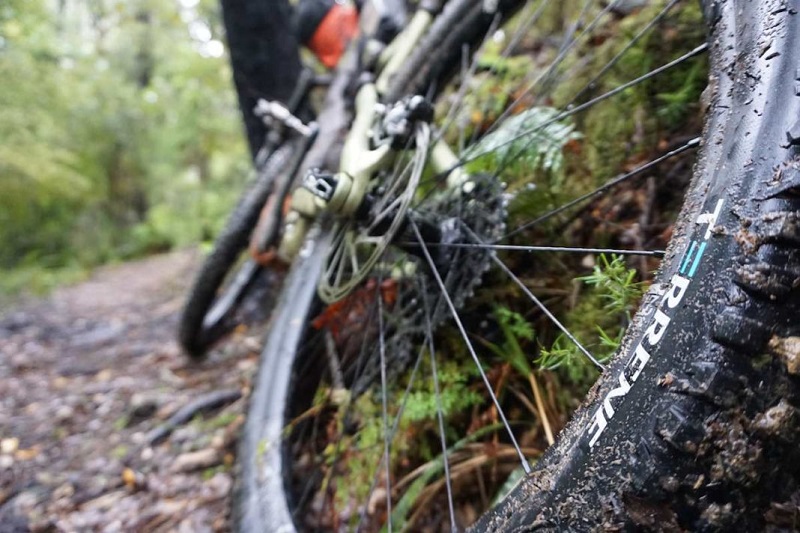Written by
Victor Volynski
Posted on
Feb 24, 2022
Read time
4 mins
Due to the high stakes of mountain trails, mountain bike tire pressure is crucial. Typical mountain bike psi ranges from 22psi (1.5 bar) to 35psi (2.4 bar), with the rear wheel maintaining a slightly higher pressure. The exact number depends on a multitude of factors including rider weight, terrain, and preference.
Generally, soft tires are associated with slower rolling speeds. On mountain bike trails this is far from the truth. The reality is, harder tires are not able to properly grip the track, and instead tend to bounce. The lack of friction and time that hard tires spend off the ground can significantly reduce a rider’s speed, especially when using lower gear ranges. The best mountain bikes don't always have the highest tire pressure.
Softer tires are able to sink and roll over uneven terrain, keeping better traction of the course. This more than makes up for the lower maximum rolling speed. If the tires are too soft - under 20 psi, they will begin to drag, which will ultimately make them catch the surface too much. This excess of friction will ultimately make the rider very slow. The wheel rims will also begin to take unnecessary impact damage.
Note 1: Reduce pressure by around 2-4 psi on tubeless setups.
Note 2: Configure your bike such that the rear tire pressure is 1-2 psi more than the front tire.
Note 3: Use pump gauges only as a rough guide, as they tend not to be the most accurate.
| Weight | DH | Enduro | Trail | XC |
|---|---|---|---|---|
| 40+50kg | 14 psi front, 18 psi rear | 15 psi front, 19 psi rear | 16 psi front, 20 psi rear | 17 psi front, 21 psi rear |
| 50-60 kg | 15 psi front, 19 psi rear | 16 psi front, 20 psi rear | 17 psi front, 21 psi rear | 18 psi front, 22 psi rear |
| 60-70 kg | 17 psi front, 20 psi rear | 18 psi front, 21 psi rear | 19 psi front, 22 psi rear | 20 psi front, 23 psi rear |
| 70-80 kg | 19 psi front, 21 psi rear | 20 psi front, 22 psi rear | 21 psi front, 23 psi rear | 22 psi front, 24 psi rear |
| 80-90 kg | 22 psi front, 23 psi rear | 23 psi front, 24 psi rear | 24 psi front, 25 psi rear | 25 psi front, 26 psi rear |
| 90-100 kg | 23 psi front, 25 psi rear | 24 psi front, 26 psi rear | 25 psi front, 27 psi rear | 26 psi front, 28 psi rear |
| 100-110kg | 25 psi front, 27 psi rear | 26 psi front, 28 psi rear | 27 psi front, 29 psi rear | 28 psi front, 30 psi rear |
| Weight | DH |
| 40+50kg | 14 psi front, 18 psi rear |
| 50-60 kg | 15 psi front, 19 psi rear |
| 60-70 kg | 17 psi front, 20 psi rear |
| 70-80 kg | 19 psi front, 21 psi rear |
| 80-90 kg | 22 psi front, 23 psi rear |
| 90-100 kg | 23 psi front, 25 psi rear |
| 100-110kg | 25 psi front, 27 psi rear |
| Weight | Trail |
| 40+50kg | 14 psi front, 18 psi rear |
| 50-60 kg | 15 psi front, 19 psi rear |
| 60-70 kg | 17 psi front, 20 psi rear |
| 70-80 kg | 19 psi front, 21 psi rear |
| 80-90 kg | 22 psi front, 23 psi rear |
| 90-100 kg | 23 psi front, 25 psi rear |
| 100-110kg | 25 psi front, 27 psi rear |
| Weight | Enduro |
| 40+50kg | 14 psi front, 18 psi rear |
| 50-60 kg | 15 psi front, 19 psi rear |
| 60-70 kg | 17 psi front, 20 psi rear |
| 70-80 kg | 19 psi front, 21 psi rear |
| 80-90 kg | 22 psi front, 23 psi rear |
| 90-100 kg | 23 psi front, 25 psi rear |
| 100-110kg | 25 psi front, 27 psi rear |
| Weight | XC |
| 40+50kg | 14 psi front, 18 psi rear |
| 50-60 kg | 15 psi front, 19 psi rear |
| 60-70 kg | 17 psi front, 20 psi rear |
| 70-80 kg | 19 psi front, 21 psi rear |
| 80-90 kg | 22 psi front, 23 psi rear |
| 90-100 kg | 23 psi front, 25 psi rear |
| 100-110kg | 25 psi front, 27 psi rear |
If you need a more detailed breakdown of your tire pressure, you can find it at the Pressure Prof tire pressure calculator.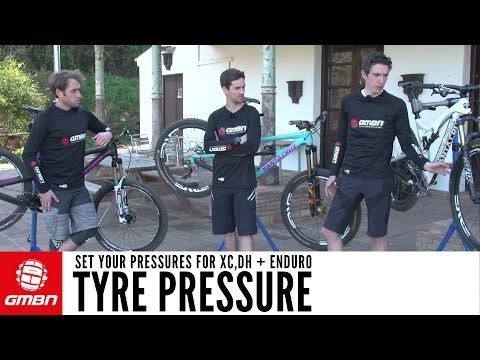
The heavier the rider, the more air pressure they will need. Ultimately you will want to stick to a high psi. Generally, guys and girls weighing over 90Kg would likely want at least 25psi in most tires. It’s also possible to buy specialised heavier and sturdier tires for MTB’s, which would allow a lower psi to be used. This may be a good option if you still want the same grip of a lower pressure tire while not sinking into the tires too much.
Hardtail mountain bikes lack rear suspension, and so it’s necessary to have slightly more psi in the rear wheel for comfortable riding. Good hardtail mountain bike riders will learn to be efficient with the way they ride, minimising rear tire impact as much as possible. In full suspension bikes, the suspension can take some of the pressure off the rider and so it’s not necessary to have as much psi in the rear tire.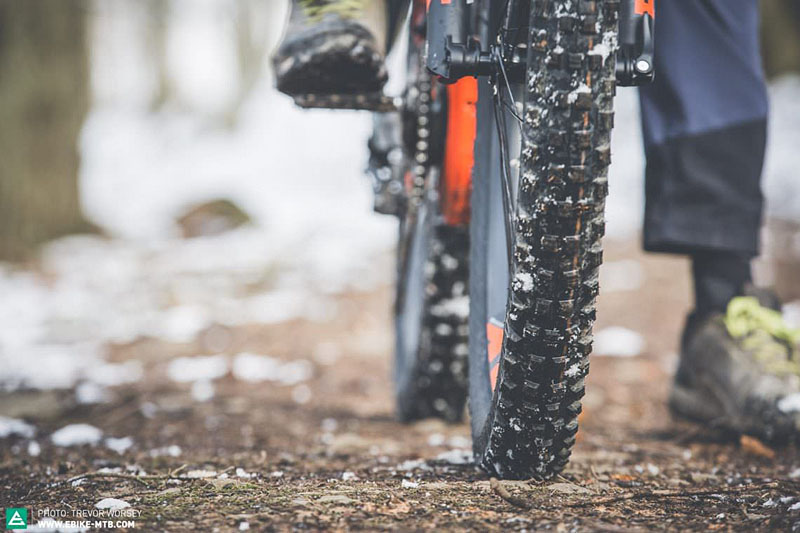
Generally the harder and smoother the trail the more psi you want. This will allow you to go faster. Rougher mountain bike trails with lots of hills will benefit from softer, lower psi tires as these will allow the bike to grip the surface better and will make for a more comfortable ride. The tires won’t bounce so much and you’ll have a better and more controlled riding experience.
All bike tires leak air, even properly set up tubeless tires. Typical drops are a few psi per week, but drops can be more dramatic depending on use and environmental factors. For instance, for every 10 degrees Celsius drop in temperature, a tire’s pressure will reduce by 2% due to the air inside exerting less pressure on the wall of the tire. By checking your mountain bike tires regularly, you can avoid any unexpected surprises and tire punctures. When you do pump the tires, never go over the manufacturer’s maximum pressure!
By Gerow
Updated
Singletracks may receive compensation for purchases made through any affiliate links in this article.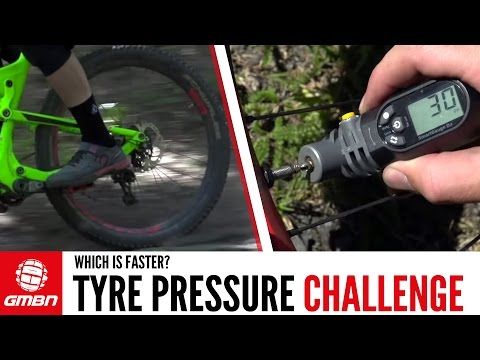
The topic of tire pressure inflated while chatting with some new riders the other day, and one of them mentioned running 27psi — when they remember to check. This particular athlete fell in love with trails over the summer as a new pandemic hobby, and she now rides a couple times per week. She also weighs 125lb, and that piqued my attention as to why she chose to run such high pressure.
“Someone at the bike shop told me to,” she said. While bike shops are often the best source of information for most things MTB-related, this was clearly a misspoke notion.
My friend asked if that number seemed accurate and how she could determine a more precise pressure for her weight and riding style. There are countless ways to find the ideal pressure, and the result is inarguably subjective. A starting point that’s always worked well for me is to use a formula I found on the Stan’s NoTubes website when they first started making tubeless sealant.
photo via Facebook: Quiet Waters Park Trail Riders and BuildersThat formula is (rider weight in pounds divided by 7) – 1 for the front tire and the same formula +2 for the rear tire.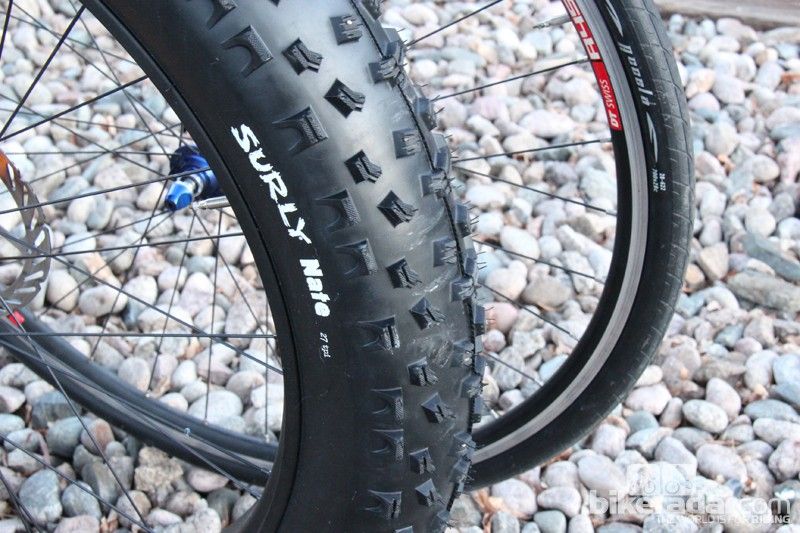 In the case of my friend, that’s 125 LBS / 7 = 17.9psi. So she would want to run roughly 17psi under the bars and 20 beneath the saddle. This formula has always worked well for me, with small tweaks to accommodate terrain, temperatures, and other important variables.
In the case of my friend, that’s 125 LBS / 7 = 17.9psi. So she would want to run roughly 17psi under the bars and 20 beneath the saddle. This formula has always worked well for me, with small tweaks to accommodate terrain, temperatures, and other important variables.
Following the above computation, the best way to determine your optimal tire pressure is to go ride. You may hit the trail and find that the front tire is too low for your body position and the dirt surface. If you’re rolling your version of fast down a favorite descent and you hear the rim strike more than once against rocks and roots you may want to add some air. Conversely, if the rim never bottoms out at max speed and you’re having trouble maintaining traction, you may want to lose 1-2psi and reassess. If you have appropriate tread for the trail surface and your riding style, the right pressure will do much of the work to help you achieve maximum grip and go faster.
Certain trails and weather conditions call for different tire pressures.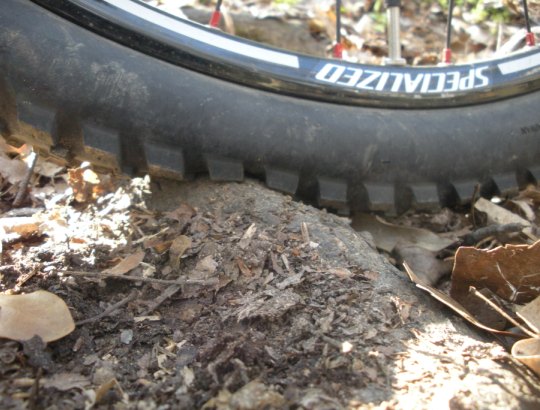 A lot of folks like to drop their tire pressure slightly to achieve more grip on muddy trails and raise it for fast rocky tracks or jump sessions. The difference between those condition-specific pressures is often 1-3 PSI, and it’s important to know how much air is inside the rubber so you can adjust it in the right direction. Loads of riders check their pressure with the palm of their hand, using feel to determine how much air is inside. I tried this for several years, and when I actually checked the pressure with a gauge it varied by 3-5psi despite feeling the same as the prior pump. That discrepancy was too wide for me, and I now use a digital gauge to dial in the numbers before every ride. It adds 1-2 seconds to the ride-prep process, affords me some mental security on the rocks, and provides the ability to more accurately test tires and wheels.
A lot of folks like to drop their tire pressure slightly to achieve more grip on muddy trails and raise it for fast rocky tracks or jump sessions. The difference between those condition-specific pressures is often 1-3 PSI, and it’s important to know how much air is inside the rubber so you can adjust it in the right direction. Loads of riders check their pressure with the palm of their hand, using feel to determine how much air is inside. I tried this for several years, and when I actually checked the pressure with a gauge it varied by 3-5psi despite feeling the same as the prior pump. That discrepancy was too wide for me, and I now use a digital gauge to dial in the numbers before every ride. It adds 1-2 seconds to the ride-prep process, affords me some mental security on the rocks, and provides the ability to more accurately test tires and wheels.
Speaking of variables, there are a lot of things that affect tire pressure, and many more that are affected by the amount of wind inside that C-shaped rubber. Tire pressure changes with temperature and elevation, and you may need to adjust the numbers depending on where and when you’re riding. The pressure amount will affect the way the tire deforms over obstacles, in turns, and through compressions, how it grips, overall rolling resistance, bump absorption, puncture and rim protection, and the size of the traction patch, among other factors. Tire pressure is one of the most important pieces of pre-ride bike setup, and it’s worth playing around with different numbers to find what feels best for you.
Tire pressure changes with temperature and elevation, and you may need to adjust the numbers depending on where and when you’re riding. The pressure amount will affect the way the tire deforms over obstacles, in turns, and through compressions, how it grips, overall rolling resistance, bump absorption, puncture and rim protection, and the size of the traction patch, among other factors. Tire pressure is one of the most important pieces of pre-ride bike setup, and it’s worth playing around with different numbers to find what feels best for you.
A bicycle is a well-thought-out and reliable device. But with improper operation, even the highest quality of its elements and systems can fail faster than it would happen naturally. Last but not least, it concerns the wheels. For example, on how the pressure in the chambers of the bike corresponds to a certain norm , not only comfort during rides, but also the life of the tires will depend. nine0005
nine0005
If you constantly ride wheels with less than optimal pressure, chances are that cracks have already formed on the sidewalls of your tires. This usually leads to their premature erasure. Excessively high pressure increases the risk that the tire will simply burst at the most inopportune moment.
Children's bikes are available with delivery to your region! Big choice. Best price guarantee.
This is a controversial question, the answer to which depends on many factors . First of all, this is the intended terrain on which you plan to ride and the "profile" of the bike. High pressure is preferable if you're riding on tarmac as it gives you excellent rolling, while low pressure gives you solid traction on rough terrain. The style of riding and the weight of the cyclist also matter.
Tire manufacturers usually indicate the limits within which the cyclist can vary the inflation of the wheels . In our country, pressure is usually measured in atmospheres (at).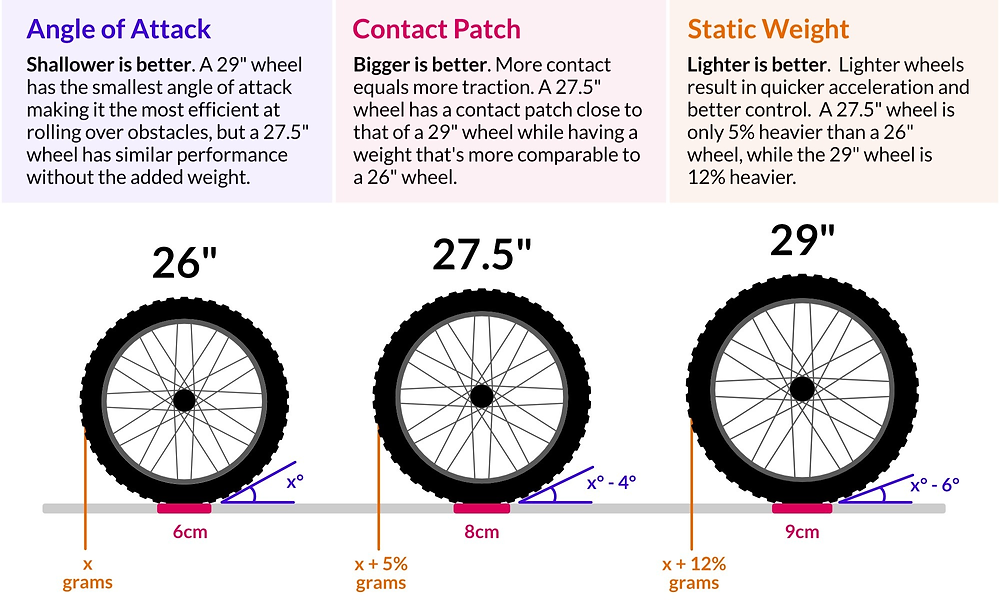 This value is approximately equal to such a unit as Bar, which is common in Europe. On American tires and products intended for the American market, the allowable pressure is indicated in Psi. nine0005
This value is approximately equal to such a unit as Bar, which is common in Europe. On American tires and products intended for the American market, the allowable pressure is indicated in Psi. nine0005
Bicycles are on sale every day at the Velosklad. Best price guarantee! Delivery to regions.
Some average tire pressure for a road bike designed for riding on good, smooth roads is 6.46 - 9.18 atmospheres. For a mountain bike, this figure varies from 2.38 to 4.08 atmospheres. For off-road driving, the optimal pressure will be from 2.38 to 3.26 atmospheres.
As for the variation within the “limits of what is permitted”, in summer it is advisable to adhere to the lower limit so that the air in the chambers, heating up and expanding, does not damage it. In winter, on the contrary, a chamber pumped up to the upper limit will allow the treads on the tires to adhere more tightly to the surface. The pressure in the chambers must also be correlated depending on the rider's weight .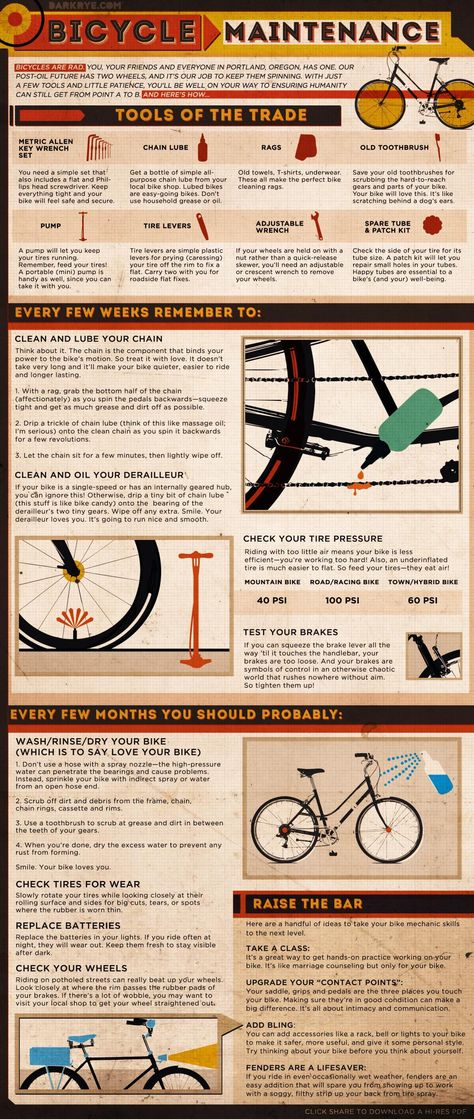 Experts believe that approximately 1% should be added to the average value for each kilo of cyclist weight over 50.
Experts believe that approximately 1% should be added to the average value for each kilo of cyclist weight over 50.
The pressure should also depend on the type of rubber . So, slicks or semi-slicks need to be pumped up almost to the maximum, because they are designed specifically for the maximum diameter. In hot weather, they are allowed to be under-inflated by about a quarter. Cross-country tires are 2-2.3 inches wide and can withstand three to four bar tire pressure. Extreme tires need to be inflated to about average, but for each descent or trick, this value must be varied subtly. nine0005
You can measure the pressure in the bicycle chambers using the pressure gauge , on which the atmosphere scale is located. It can be bought separately, or together with a bicycle pump, for example, at VeloSklad. It is also possible to measure the pressure manually, but it is quite difficult to do this, since even with a slight inflating of the chambers, they are already poorly “palpable” with your fingers. It is believed that if the chamber does not shrink under the fingers, then the pressure is normal. But this is an inaccurate method, since everyone's hand strength is different. This art is available, perhaps, only to really experienced cyclists. More accurate data will be told to you at the nearest bicycle service or service station. Experienced cyclists suggest "remember", how many times you need to pump the chamber with your pump to get the optimum pressure.
It is believed that if the chamber does not shrink under the fingers, then the pressure is normal. But this is an inaccurate method, since everyone's hand strength is different. This art is available, perhaps, only to really experienced cyclists. More accurate data will be told to you at the nearest bicycle service or service station. Experienced cyclists suggest "remember", how many times you need to pump the chamber with your pump to get the optimum pressure.
It is advisable to regularly inflate the wheels and control the pressure in the chambers, since air is lost not only through the nipple, but also through the rubber itself. Road bikes and sports bikes need to be pumped up before each ride, road bikes need it at least once a week, mountain bikes once every two weeks, and city bikes no more than once a month. If you regularly monitor the pressure in the chambers, you will extend the life of your bike. nine0005
When buying a bicycle, many do not even think about the fact that the convenience and comfort when riding it is achieved by correctly selected tire pressure. The service life of the bicycle, the speed of riding, the degree of tire wear, safety, control of the two-wheeled friend depends on how the wheels are inflated.
The service life of the bicycle, the speed of riding, the degree of tire wear, safety, control of the two-wheeled friend depends on how the wheels are inflated.
Many cyclists believe that inflating the tires is only necessary for a good bike ride. However, flat tires have a wider area of contact with the road, which means that grip will be better, but it will be very difficult to accelerate to a speed of 30-35 km / h on such tires. nine0005
When inflating your tires, you should always consider the type of terrain or surface you will be driving on. If the walk is supposed to be on an asphalt road, the tire pressure of the bicycle should be close to the maximum allowable value. Elastic wheels on a flat surface will provide a smooth rolling and high speed of movement.
For cross-country riding with unpaved paths, it is better to set the tire pressure to medium tolerable so that you can ride long distances in comfort and convenience.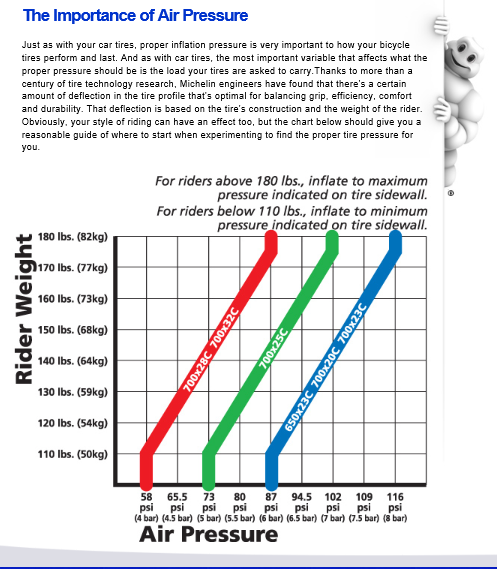 At high pressure, the grip of the wheel with the road will be minimal, respectively, all holes, pebbles, and bumps on the road will be sensitive. And with flat tires, the likelihood of damage to the wheel or puncture of the chamber increases. nine0005
At high pressure, the grip of the wheel with the road will be minimal, respectively, all holes, pebbles, and bumps on the road will be sensitive. And with flat tires, the likelihood of damage to the wheel or puncture of the chamber increases. nine0005
In order to protect yourself on the road, as well as to keep the bike or its individual parts intact, you need to know exactly the lower and upper limits of permissible values, to what pressure the bicycle wheels can be pumped.
Information about tire pressure gives you an advantage when cycling:
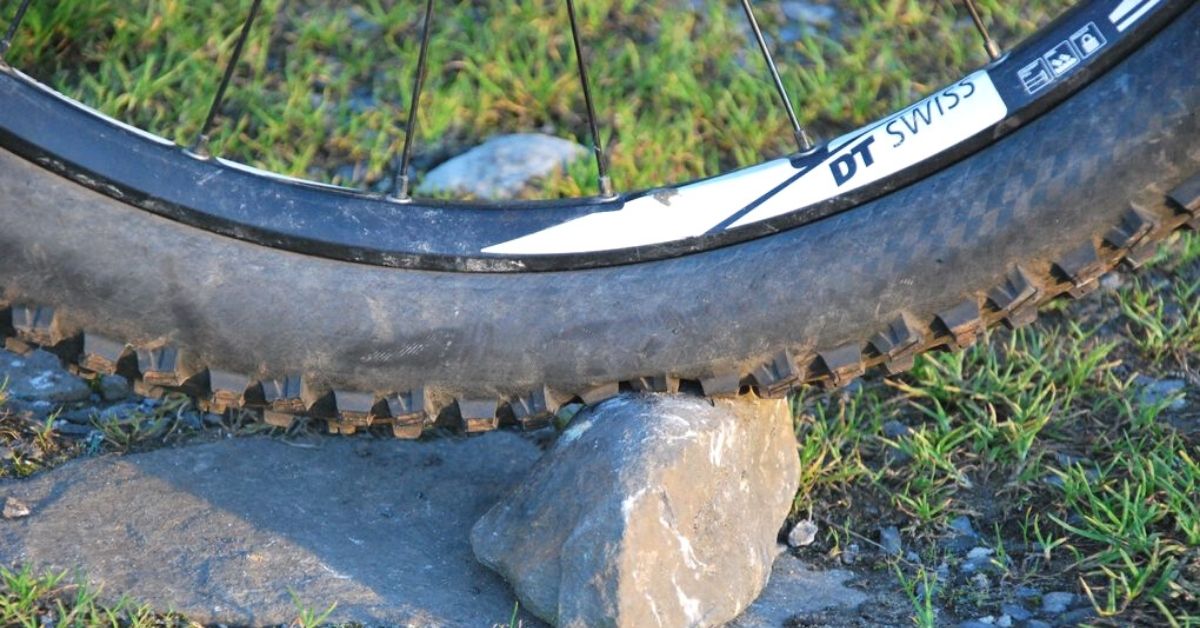
Forget the old "grandfather" way to check the wheel with your fingers. No need to rely on tactile sensations, trying to feel with your hand the degree of rubber penetration on the tire. The air leaves the wheel gradually, through the pores in the rubber. Within 2-3 weeks, the pressure decreases by 0.1-0.2 atmospheres, but you cannot determine this with your fingers. The exact value at any time will help determine the pressure gauge that every cyclist should have in his arsenal. With its help, it is simple, with a minimum error, the level of pressure in bicycle tires is measured. A pump with a pressure gauge (floor or manual) will become an indispensable tool for cyclists. nine0005
There are three standard values in which bicycle tire pressure is measured.
kPa = 14.504 PSI
All these units are used to some extent - in different countries, by different manufacturers. For residents of Russia and the post-Soviet space, the change in bars is more familiar, since this unit is clearly associated with the pressure of the 1st Earth's atmosphere at ocean level. In America and Western Europe, a popular unit is PSI, as they actively use pounds and inches in measurements. Pascals are the least used unit of measurement, but the most modern. Some bicycle manufacturers write data on the wheels about the allowable pressures in all three systems. nine0005
For residents of Russia and the post-Soviet space, the change in bars is more familiar, since this unit is clearly associated with the pressure of the 1st Earth's atmosphere at ocean level. In America and Western Europe, a popular unit is PSI, as they actively use pounds and inches in measurements. Pascals are the least used unit of measurement, but the most modern. Some bicycle manufacturers write data on the wheels about the allowable pressures in all three systems. nine0005
Manufacturers indicate on the sidewall of the tire how many atmospheres to pump the bicycle wheels. Specifies the range within which the owner of the "iron horse" determines the desired values, depending on the specific factors of riding his bike. Values in the range are labeled from min to max, in two or all three dimensions. Numbers up to 10 are atmospheres (or BAR), tens-hundreds are PSI, and six-digit values \u200b\u200band with the prefix “k” / kilo are Pascals. nine0005
When inflating a tire, you must strictly follow the manufacturer's recommendations and try not to go beyond both the minimum and maximum pressure levels indicated on the tire.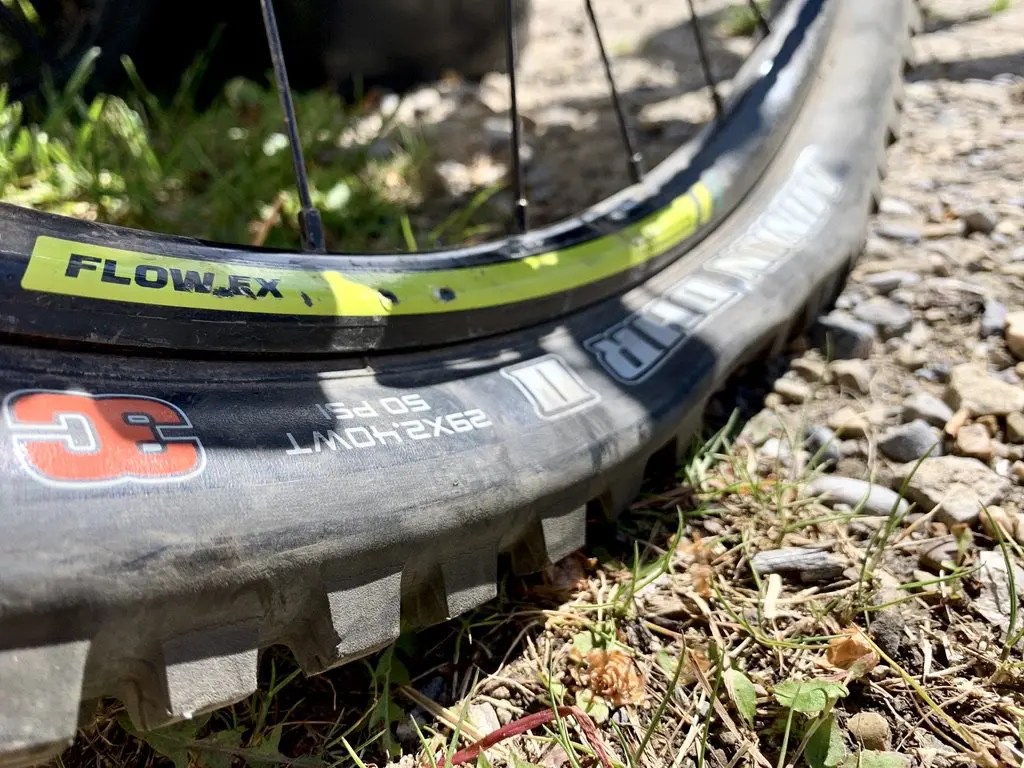 Moreover, it is better to leave a small margin of 0.2-0.5 BAR, both in one direction and in the other, so that the tire does not burst.
Moreover, it is better to leave a small margin of 0.2-0.5 BAR, both in one direction and in the other, so that the tire does not burst.
The pressure in the wheel is kept by the tire, not the tube, so there is no single standard for its value. There are several significant factors that determine how much you need to pump the wheels on a bicycle. nine0005
The type of tire is determined by the surface of the track on which the cyclist will predominantly ride. Accordingly, the level of inflation of the bicycle wheel will be different. There is a direct dependence on the roughness of the tread and the width of the wheel - the more lugs and the wider the wheel, the lower the pressure should be. Empirically, cyclists quickly determine how many atmospheres should be in the tires of their bicycle
Many cyclists do not realize that air temperature affects the pressure level in bicycle tires.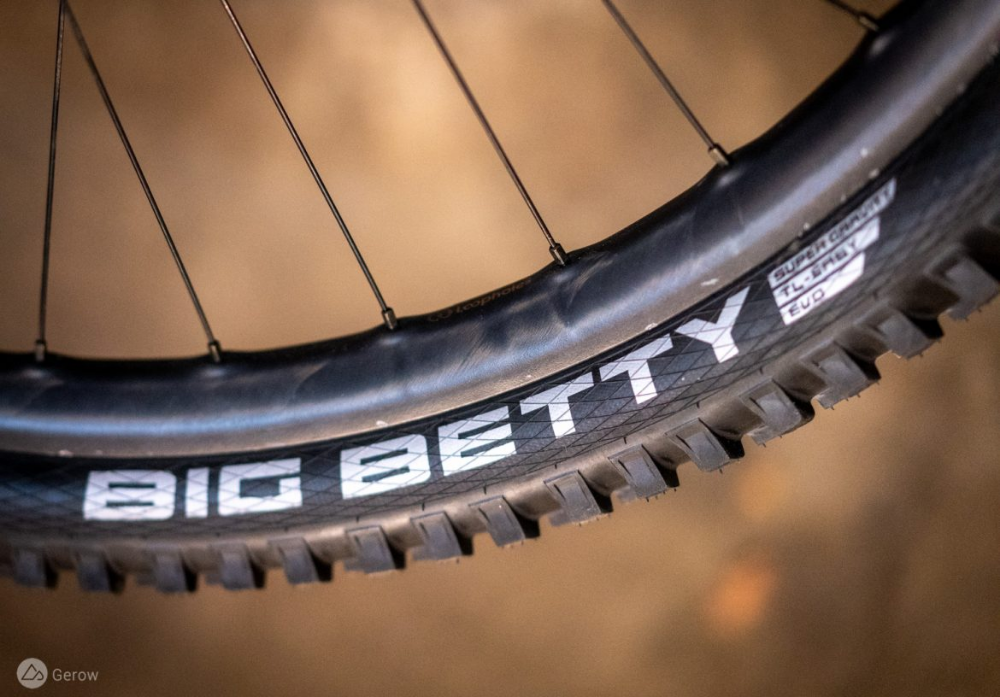 From the course of school physics, we recall that when heated, bodies expand. This means that in hot sunny weather, the pressure inside the air chamber will increase without additional pumping. Conversely, on cold winter days, a decrease in tire pressure is quickly felt due to low temperatures. So, when going for a bike ride in the cold season, the pressure indicators need to be adjusted a little higher than usual, and in the summer heat, let the air out a little. It is worth noting that when going on a bike ride, you should always take into account the weather conditions. nine0005
From the course of school physics, we recall that when heated, bodies expand. This means that in hot sunny weather, the pressure inside the air chamber will increase without additional pumping. Conversely, on cold winter days, a decrease in tire pressure is quickly felt due to low temperatures. So, when going for a bike ride in the cold season, the pressure indicators need to be adjusted a little higher than usual, and in the summer heat, let the air out a little. It is worth noting that when going on a bike ride, you should always take into account the weather conditions. nine0005
It is important to take into account the load on the bike caused by the weight of the rider, especially the fact that most of it is on the rear wheel. Therefore, the degree of its pumping should be slightly higher than the front, the optimal difference is 10%.
To calculate the optimal tire pressure for a bicycle, given the weight of its rider, you can use the table:
Rider weight (kg) Pressure (atmosphere) Pressure (PSI)
The nature, riding style and type of bicycle also affect tire pressure. Buyers who prefer an active pastime often opt for mountain bikes with 26-inch wheels, which ride well both on city streets and in rough terrain.
Buyers who prefer an active pastime often opt for mountain bikes with 26-inch wheels, which ride well both on city streets and in rough terrain.
To understand to what pressure to inflate the wheels of a bicycle, it is necessary to take into account the features of both the bike itself and other, at first glance, weightless factors. For example, weaving threads on a tire, rim thickness, driving style. The likelihood of a tire coming off a wide rim is much less than a narrow rim, because a wider rim will hold the tire better than a thin one. Mountain biking already by its name suggests the presence of a difficult surface on the track, with possible obstacles and bumps. The driving style is more aggressive than on a smooth, calm trajectory, it obliges you to increase the tire pressure to a level slightly less than the upper limit. nine0005
The diameter of the wheel will also influence the selection of the optimal pressure value, since the larger it is, the higher the volume of air pumped will be.